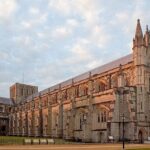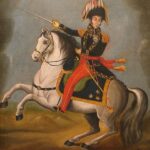![]()
“Ellens dritter Gesang“, in English: “Ellen’s Third Song”, was composed by Franz Schubert in 1825 as part of his Op. 52, a setting of seven songs from Walter Scott‘s 1810 popular narrative poem The Lady of the Lake, loosely translated into German.
The opening words and refrain of Ellen’s song, namely “Ave Maria” (Latin for “Hail Mary”), may have led to the idea of adapting Schubert’s melody as a setting for the full text of the traditional Roman Catholic prayer “Ave Maria“. The Latin version of the “Ave Maria” is now so frequently used with Schubert’s melody that it has led to the misconception that he originally wrote the melody as a setting for the “Ave Maria”.
It is one of Schubert’s most popular works. Beyond the song as originally composed by Schubert, it is often performed and recorded by many singers under the title “Ave Maria” (the Latin name of the prayer Hail Mary, and also the opening words and refrain of Ellen’s song, a song which is itself a prayer to the Virgin Mary), in musically simplified arrangements and with various lyrics that commonly differ from the original context of the poem. It was arranged in three versions for piano by Franz Liszt.
Walt Disney used Schubert’s song in the final part of his 1940 film Fantasia, where he linked it to Modest Mussorgsky‘s Night on Bald Mountain in one of his most famous pastiches. The end of Mussorgsky’s work blends with almost no break into the beginning of Schubert’s song, and as Deems Taylor remarked, the bells in Night on Bald Mountain, originally meant to signal the coming of dawn, which cause the demon Chernobog to stop his dark worship and the ghosts to return to the grave, now seem to be church bells signalling the beginning of religious services. A procession of monks is shown walking along. The text for this version is sung in English, and was written by Rachel Field.







